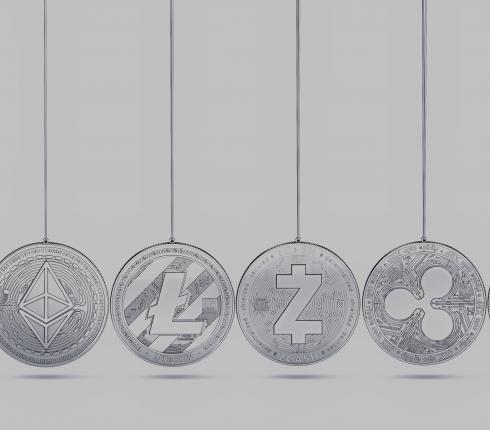NJORD Estonia: Time for Security Token Offerings?
Update: In 2020 August, Estonian private limited company’s share transfer requirements were amended in a way that makes it possible to use ETO to raise capital. We have described the process in section 3 of this post.
ICOs are one possible way to fundraise a business idea. The majority of the business ideas are technology-related (development of software, building Dapps, creating side chains and atomic wallets, etc.). However, there are advantages of bringing a more traditional kind of business to blockchain technology as well.
The ICO market has recently evolved into two separate states. If it is true that doubts on the quality of some projects have affected the overall spirit of conducting and investing in an ICO, it is also true that it has encouraged different companies to take a more regulated approach to their business models. One of the consequences of the ICO market becoming more mature is the fact that not all companies are avoiding issuing security tokens. In fact, we see the appearance of crypto exchanges dedicated to the trade of securities tokens and, in some countries, banks are partnering with such initiatives.
This article aims to provide a wider perspective on “the new offerings” that according to some authors can be divided into ETOs (Equity Token Offering) and STOs (Security Token Offering). ETO corresponds to the issuance of tokens that represent the equity of the issuer, i.e. tokens represent shares and token holders are the company’s shareholders. STO corresponds to the issuance of tokens that represent all kinds of securities – subscription rights to shares, bonds, derivatives, similar right to the above, etc. - represented by a token according to the applicable law.
Scope of Regulation: Utility Token vs. Security Token
Both utility tokens and security tokens are regulated by existing law. However, the laws applicable to security tokens are more burdensome to the issuer because of the financial risks and the regulation of the financial market, e.g. investor protection and market integrity. The regulations applicable to utility tokens are mostly related to contract law based on the free will of parties although partly influenced by consumer protection rules, while the regulation applicable to security token offerings is stretching towards securities market regulation, which is more regulatory and compliance-oriented.
It is extremely difficult, if not impossible, to make a global issuance of security tokens due to the different jurisdictional rules and approaches. Opposite to how it is done in relation to ICOs, the list of the few jurisdictions from where investing in ICOs is not allowed should be replaced by the clear list of the included jurisdictions to where the offer of security tokens can be directed.
The MiFID and MiFID 2, MiFIR and Prospectus Regulation, to name a few, constitute the core securities market law in the European Union and are the vectors for qualifying a token as security and determining the requirements for the offerings.
Fear of STO?
Security tokens issuance should not be seen as a regulatory burden but rather looked at from the perspective of positive achievements for the company conducting the crowdfunding. The positive aspects are connected with investors finding investor protection that they might not find in the utility ICO. The fact that investment in tokens actually comes with its associated rights and monetary benefits and does not depend on a speculative first stage token valuation, will contribute for the ICO issuers to increase the probabilities that the token holder will really hold the token and not sell it quickly for a profit.
The issuance of security tokens is still taking its first steps and for that reason, it is yet not very clear how the market participants will behave and what choices they will take regarding jurisdiction and STO or ETO dimensions.
2. LEGAL FRAMEWORK IN ESTONIA
EFSA Guidelines
According to the Estonian Financial Supervision Authority’s (EFSA) interpretation, a token falls under the definition of security and is object to EFSA’s supervision if the tokens “give investors certain rights in the issuer company or whose value is tied to the future profits or success of a business”.
The FSA offers further guidance on the security tokens definition by stating that “tokens (…) depending on their structure, might be considered as securities according to the definition set forth in the current Securities Market Act (SMA) as well as in the Law of Obligations Act (LOA). The EFSA adds that “substance should be considered over form”.
Utility Token
According to the EFSA, utility tokens “(do) not promise any profits or monetary claims to its holders” and are used for “(granting) access to a platform/system or a right to use a product/service”. The large majority of ICOs that have happened so far, particularly since the U.S. Securities and Exchange Commission (SEC) started to investigate and crack down on ICO for considering them securities, have been aiming to issue utility tokens. Yet, it is important to keep in mind that the securities law in Europe has clear differences from the US law. A token might be considered a security in the US but not in the EU. Looking from the other perspective, this also means that an STO in Europe cannot offer tokens in the US or to US citizens if not approved by the SEC.
Utility ICOs do not need to file a prospectus and in majority of jurisdictions, there are yet no rules regarding the information that should be contained in the Whitepaper. Usually, the laws for advertising are the ones applicable to Whitepapers and stipulate the requirements these offers must meet. Utility token offerings are not supervised by EFSA and all the contracts (purchase, lending) relating to utility tokens are regulated by the Law of Obligations Act and other relevant civil law acts.
Security Token
As previously explained, security tokens fall under EFSA supervision. This chapter indicates the main information to be included in the prospectus and what are the reporting requirements to the EFSA. An extensive list of all the information to be included in a prospectus is given by the Prospectus Regulation (Regulation (EU) 2017/1129).
Prospectus:
- information which is presented in an easily analysable and comprehensible form;
- registration document which contains information on the issuer;
- securities note which contains information concerning the securities;
- a summary containing the relevant warnings;
- description of the risks and main features of the issuer and potential guarantor, including assets, liabilities and financial situation;
- description of the risk associated with the investment in the securities and the main features of the investment;
- general terms and conditions of the offer;
- details of admitting to trading;
- reasons for offer and use of received revenue.
Reporting requirements:
- the issuer shall disclose the regulated information;
- the issuer is required to disclose its annual report within four months after the end of the financial year and arrange the annual report to be publicly available for at least ten years;
- the issuer of shares or debt securities is required to disclose the half-yearly report concerning the first six months of the financial year;
- the obligation to notify of the number of votes.
3. HOW TO LAUNCH AN STO IN ESTONIA
A token issued through an STO can grant its holder with a right, under certain conditions, to receive regular payments distribution from the issuing company. This token does not qualify as equity or share and therefore, does not fall under the above-mentioned registration and bank account requisites.
An STO is not an incomplete ETO. It is rather a simplification that keeps intact the expectation for monetary payments from the issuing company to the token holder. Even though participation in the decision-making process might be also an expected part of an investment, it is definitely not as important for the investor as future benefit/expectation of payments. However, there is a long road to take regarding the token types and the applicable law and differences per jurisdiction – yet, the benefits of allowing STOs to flourish for those who need access to funding and those who are investors are actually measurable and quantifiable. A recent study by management consulting office Civitta on capital market diagnostics also found that one of the obstacles for the development of the Estonian capital markets is that the cost of listing shares on a public stock exchange in Estonia is too high and STOs should certainly assist in overcoming that hurdle.
4. HOW TO LAUNCH AN ETO IN ESTONIA
ETO’s are a feasible option since August 2020.
Before the fall of 2020, Estonia allowed to transfer the shares of private limited companies only via notary or alternatively, via the account operator in the case of the shares registered in the central depository (currently maintained by Nasdaq). The latter requires all shareholders to open a securities account in an Estonian bank, Clearstream Banking system, or certain international banks. The shares in the public limited company can be transferred only via the central depository (using dedicated account operators) and hence, the shareholders must have a securities account, subject to same limitations.
In the context of blockchain technology, and operational principles, where system decentralization is important, ETO’s have not been feasible in Estonia because the exchange of equity tokens always required visiting a notary or opening a local securities account.
As of August 2020, the law was amended so that transferring a share of a private limited company is possible without the requirements stipulated above. Opting out of the notarial signing requirement hence makes it possible to offer equity tokens to raise capital.
In order to transfer shares (including equity tokens) of a private limited company, the following requirements must be followed:
· the possibility to transfer shares without going to a notary must be stipulated in the articles of association, whereby such amendment in the articles of association must be approved by all shareholders;
· the share transfer agreement must be in a form reproducible in writing;
· the private limited company’s share capital must be at least EUR 10,000 and entirely contributed to the company (under certain conditions in Estonia, the share capital contribution can be postponed as well);
· the parties of the agreement must inform the private limited company that the transaction has taken place, including the relevant proof (usually by sharing a copy of the share transfer agreement).
There is a practical problem related to the company’s management board, whose responsibility is to inform the business register about the changes in the ownership of the company. If a private limited company has arranged an ETO and tokens will be tradable on an online platform, it is possible that the company’s ownership is subject to constant changes. In that case, it is not practically feasible for the management board of a company to share constant ownership updates with the business registry. There is a need for an automated solution and such solutions are underway. As of right now, none of such solutions have already been implemented.


















